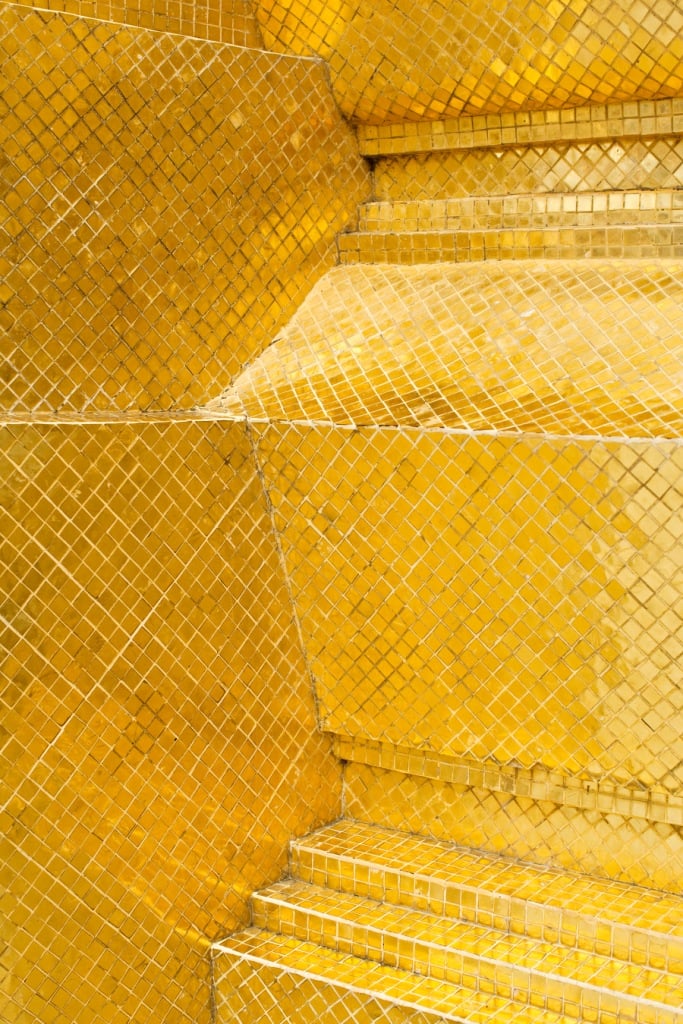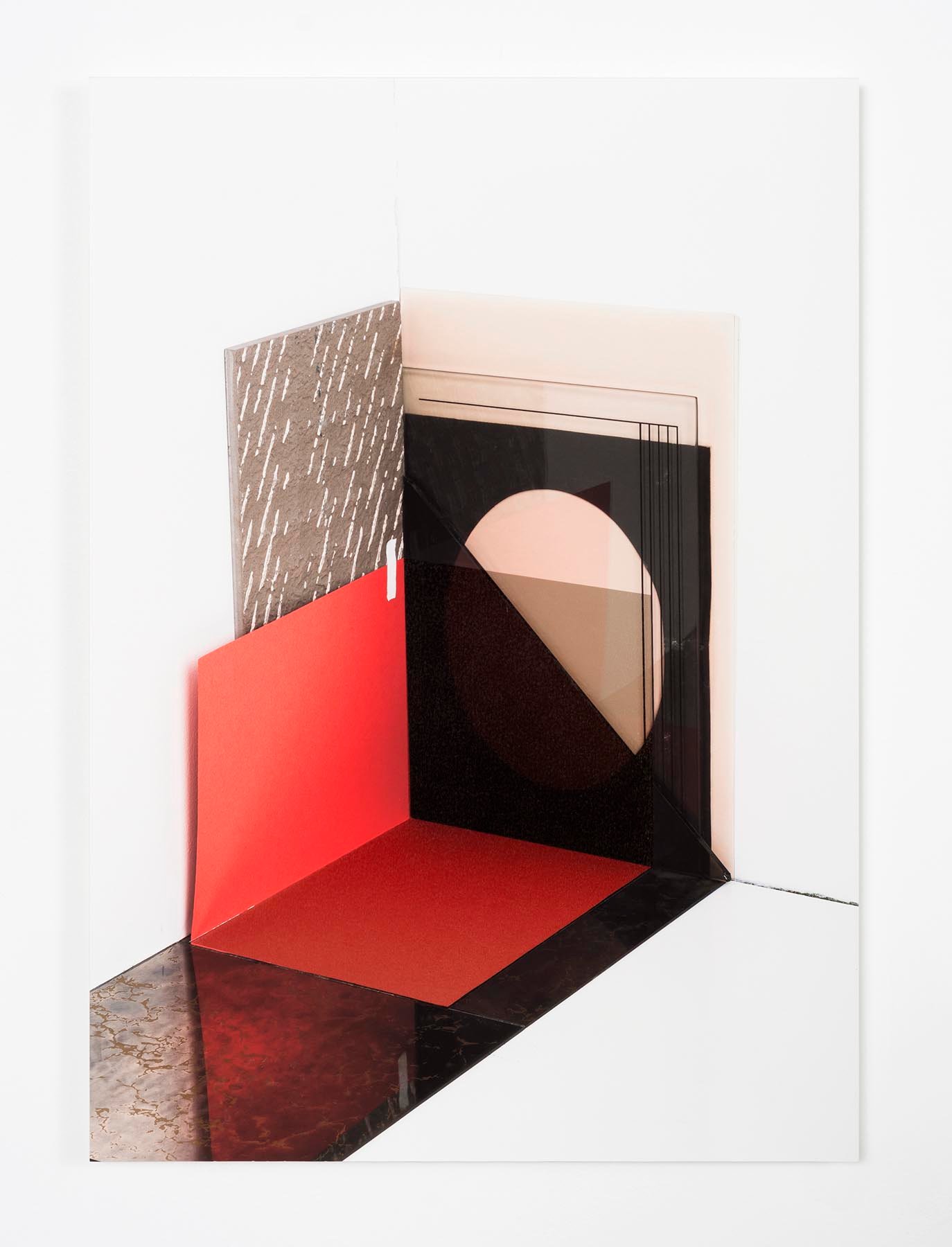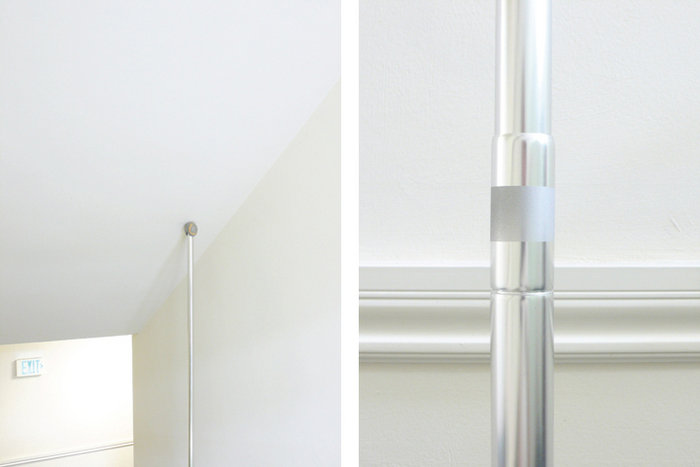
© » KADIST
Ana Teresa Fernández
Drawing & Print (Drawing & Print)
The artist writes about her work Borrando la Frontera, a performance done at Tijuana/San Diego border: “I visually erased the train rails that serve as a divider between the US and Mexico. I painted them sky blue, creating a “Hole in the Wall” This deconstruction of “feminized” work explores the difficulties in reconciling both low wages and undervalued work via social and political infrastructures, confronting issues of labor and power. The images that I myself perform, present a duality: women dressed in a black tango dance attire while engaging in de-skilled domestic chores; the surreal within non-fiction.

© » KADIST
Natasha Wheat
Drawing & Print (Drawing & Print)
Natasha Wheat’s Kerosene Triptych (2011) is composed of three images, one each from the digital files of the Library of Congress, the Smithsonian Institution, and the Field Museum tropical research archive. The original photographs were taken by anonymous photographers, not as art but as documents of the building of the Panama Canal. The laborers in the images are holding cans of kerosene and spraying it into the foliage.

© » KADIST
Chris Wiley
Architectural details become abstracted renderings in Chris Wiley’s inkjet prints 11 and 20 (both 2012). In photographing seemingly mundane images of doorways and walls, Wiley collapses the viewer’s experience of inhabiting space by foregrounding features that we all too often miss in our built environment: the peeling white paint on a Corinthian column or the rusty studs on a blue door.

© » KADIST
Phillip Maisel
While his works can function as abstract, they are very much rooted in physicality and the possibilities that are inherent in the materials themselves. Elements used in various stages of photographic processes (color filters, glassine, and prints themselves) are integrated back into the artwork either as part of the sculpture or as collage elements that are later added to the print. In some of the works, Maisel cuts into the prints themselves.

© » KADIST
Oliver Laric
Oliver Laric’s video Versions is part of an ongoing body of work that has continued to evolve and mutate over time. Comprised of several video and sculptural works that share the same title, the Versions series reflects Laric’s key concerns: the mutability of images and objects and the negotiation between original and copy. In this video, we see several 3D renders of recognizable objects and places, while an ubiquitous feminized robotic voice that evokes the domestic familiarity of voice recognition tools such as Siri and Alexa, speaks of issues relating to identity, language, and translation.

© » KADIST
Chadwick Rantanen
Telescopic Pole is an adjustable telescopic pole that extends vertically from floor to ceiling and is held up by its own internal pressure. The ends, protected by two, cut-open tennis balls, recall the legs of a walker. For Rantanen’s second solo exhibition at Jancar Jones Gallery, San Francisco in 2010, one pole was placed inside the gallery while the other was located outside.

© » KADIST
Chris Wiley
Architectural details become abstracted renderings in Chris Wiley’s inkjet prints 11 and 20 (both 2012). In photographing seemingly mundane images of doorways and walls, Wiley collapses the viewer’s experience of inhabiting space by foregrounding features that we all too often miss in our built environment: the peeling white paint on a Corinthian column or the rusty studs on a blue door.

© » KADIST
Natasha Wheat
Wheat’s work is built on a strong conceptual framework that weaves together commentary on social and political issues and the radical potential for change. Be Oblivion, in Disconnect (2011) is a sculpture and an intervention. Two cardboard boxes house white neon letters that collectively have the potential to spell “Be Oblivion.” The dismembered phrase is rendered powerless in its present state; the potential power lies with the viewer, who could conceivably reconstruct it.
Chris Wiley
- location: New York, New York
- year born: 1981
- gender: male
- nationality: British
Chadwick Rantanen
- location: Los Angeles, California
- year born: 1981
- gender: male
- nationality: American
- home town: Wausau, Wisconsin
Oliver Laric
- location: Berlin, Germany
- year born: 1981
- gender: male
- nationality: Austrian
- home town: Innsbruck, Austria
Phillip Maisel
- location: San Francisco, California
- year born: 1981
- gender: male
- nationality: American
- home town: Chicago, Illinois